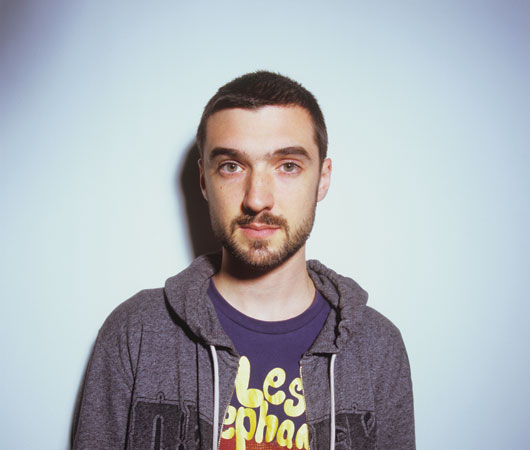Uproot Andy: From kuduro to cumbia and beyond, Andy Gillis bridges ?the post-geographic musical gap.
When Uproot Andy rolls out the names of rhythms, he savors them deliberately, like a […]

Uproot Andy: From kuduro to cumbia and beyond, Andy Gillis bridges ?the post-geographic musical gap.
When Uproot Andy rolls out the names of rhythms, he savors them deliberately, like a […]

When Uproot Andy rolls out the names of rhythms, he savors them deliberately, like a hoodoo priest chews on a root: kuduro, bullerengue, cumbia. And like a root doctor, it’s from the mixing of these ethnically diverse musical styles that Andy Gillis draws power. It’s a hoodoo he’s practiced as a DJ, as co-founder of New York City’s digi-global party Que Bajo?!, and as a producer for the ZZK and Bersa Discos labels. And now, along with Que Bajo?! cohort Geko Jones, he’s faced the most post-modern of DJ tasks: taking their global sounds to cumbia’s ancestral homeland.
“The crowd might’ve been surprised to hear us play this folkloric music from their own country,” says Andy, on the phone from Bogotá, Colombia. “But we’re not playing traditional Colombian music—I don’t feel weird playing the stuff that I’ve remixed here. [The fact is] Colombia’s one of the least popular places for cumbias right now—at least amongst young people, in the city, almost no one plays it.”
One of the brightest music stories of the young 21st century is the burgeoning renaissance of globalized electronic music. From hip-hop’s plundering of bhangra, to the explosion of Balkan beat, baile funk, and the current cumbia revival, the past decade has seen a surge of interest in ethnic rhythms. And at the forefront stand artists such as Uproot Andy, who see each genre less as a scene to join, and more as a color to add to their palette—creating the world’s first post-geographic ‘folk’ music.
“El Botellón”
“A lot of the scenes that we fold into this [music]—something like baile funk or kuduro—they exist on their own [geographically],” says Gillis. “At a Rio baile party, they would not play cumbia. These things are still local popular musics. People talking about ‘global bass’ are interested in all of those things, mixing those elements. On this [Que Bajo?!] tour of the US, we’ve seen there are openings [for this music] all over the place—not connected geographically, but via the internet.”
The first “opening” Uproot Andy discovered was New York’s Bulgarian bar, Mehanata, and its chaotic world-music parties. A curious record collector, Gillis fell right into Mehanata’s anything-goes aesthetic. It’s nothing new for New York City’s generations of musical mixology. But in today’s blogosphere-dominated global music world, dissemination that might once have taken years occurred overnight.
“[The difference is] temporal,” says Gillis. “If I say, ‘Oh, I’ve heard of this genre, let’s see what it sounds like,’ I can just do it. I’ve felt like an ethno-musicologist—an academically unsound one, because I only use the parts I like.”
As he prepares his first album-length project—after a slew of remixes for cumbia-, baile funk-, and other genre artists—and finishes up his first tour of the US and South America, Uproot Andy stands ready to enter the next decade in a distinctly exciting position. Along with his Dutty Artz and Que Bajo?! colleagues, and an international assortment of artists and DJs, Uproot Andy is on the cusp of a new musical scene—before it’s even got a proper name. “As a composer, finding a new rhythm is like an artist with a new medium to work in,” he says. “All the things that have influenced me have been genres—so I was jealous, a year or two ago, when I felt like I was doing something that wasn’t a ‘scene,’ wasn’t gonna have a name. But that’s changing.”????????
Uproot Andy plays the second anniversary of Tormenta Tropical this Saturday, December 12, in San Francisco.

